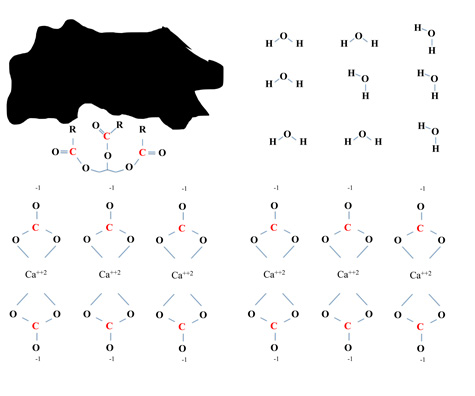Lithography

Limestone with Drawing and Water (And Nitric Acid and Gum Arabic)
OK, you've made your drawing on the limestone. Now we need to add the water. And we do that as a mixture of 1) water, 2) gum arabic, and 3) nitric acid.
Yep. You need nitric acid and gum arabic although you eventually wash them away. This mixture is called the "etch" although it doesn't really etch like an etch in an etching. For one thing it's much weaker, and it doesn't actually remove any signifcant amount of the surface.
You make the etch by taking a gum arabic solution in water - 30 % is typical - and add so many drops of concentrated nitric per ounce of gum arabic (how much depends on how light or dark your drawing is). So you end up with a solution that is 70 % water, 30 % gum arabic, and a weak concentration of the acid. Of course concentrated nitric acid is something you shouldn't play around with unless you have proper training and equipment. So don't try this at home.
The gum arabic does two things. On its own, it is slightly acidic and so has some etching (ergo, surface treatment) effect. You can also use straight gum arabic solution (no nitric) to protect some areas from the acid etch. You do that if you have particularly light areas that need to show up on the print.
The nitric acid does two things. It strongly etches the stone, and in doing so reacts with the carbonate groups to release carbon dioxide. So you can see bubbles come off in the course of normal etching. Etching cleans and alters the surface to make it more receptive to water.
But the nitric acid also serves as a catalyst to hydrolyze the vegetable oil. We'll go into that very important part of the process if you just click here.